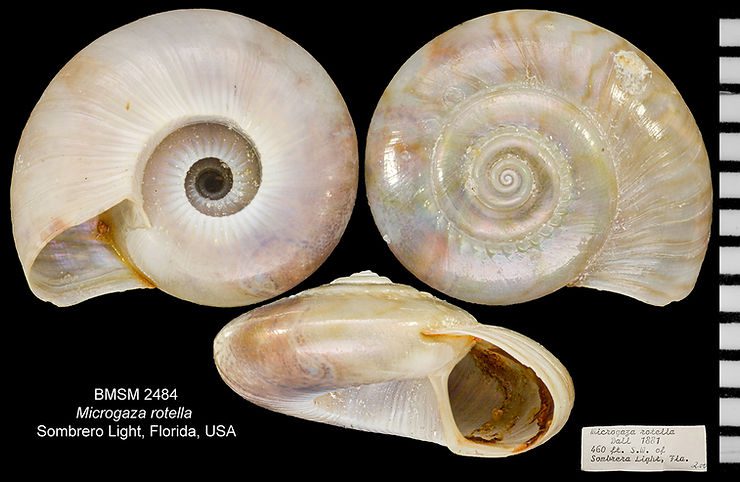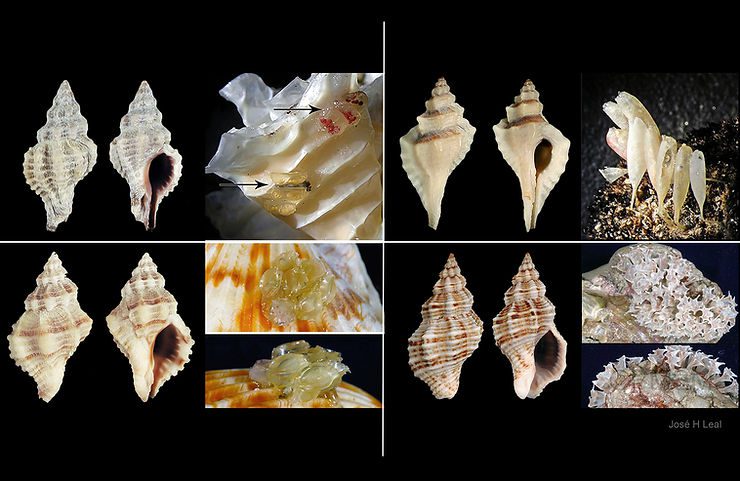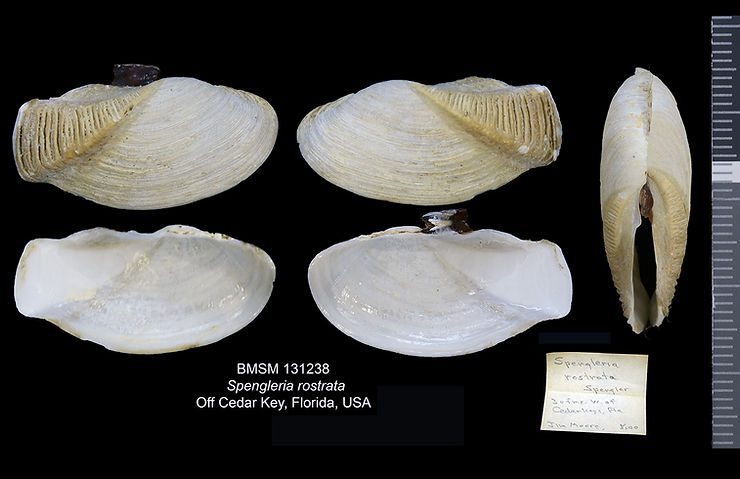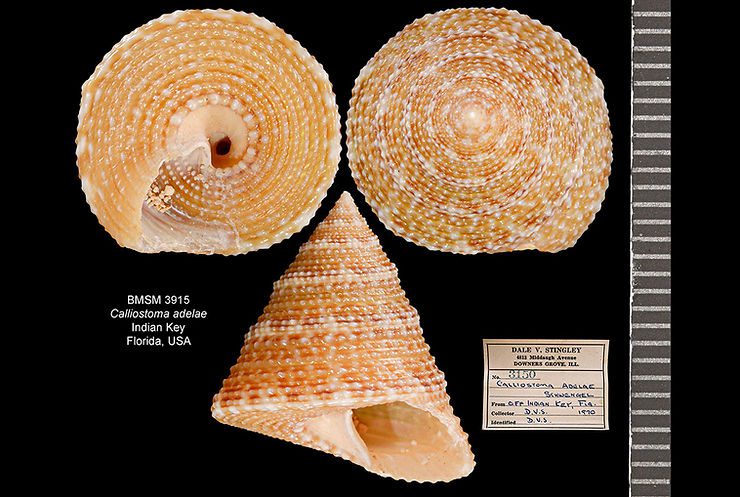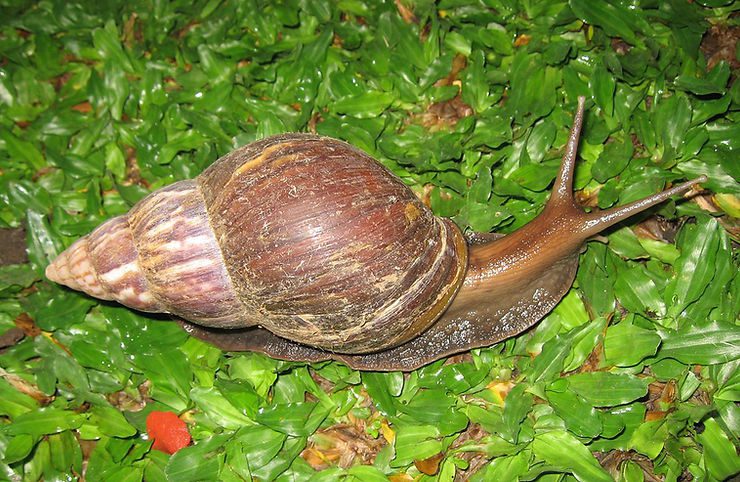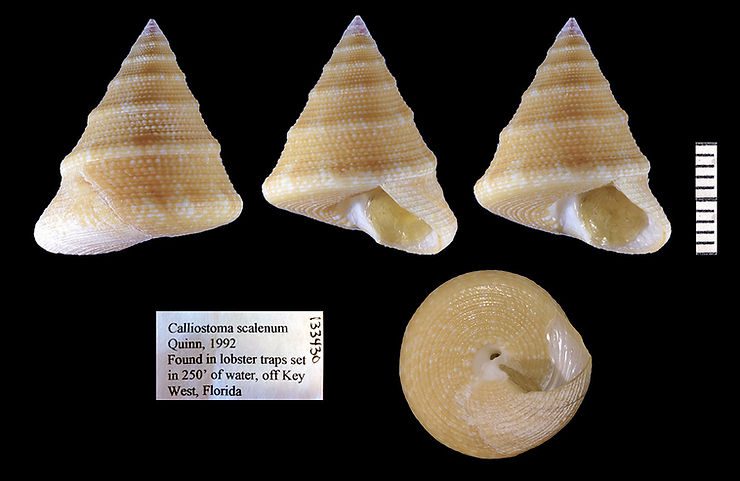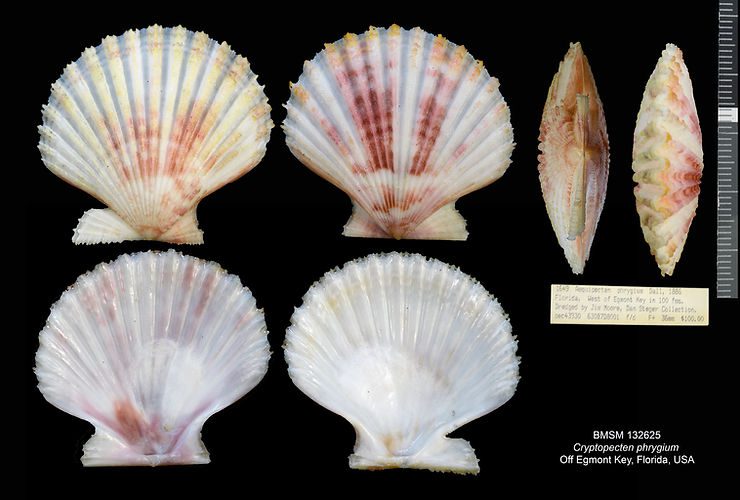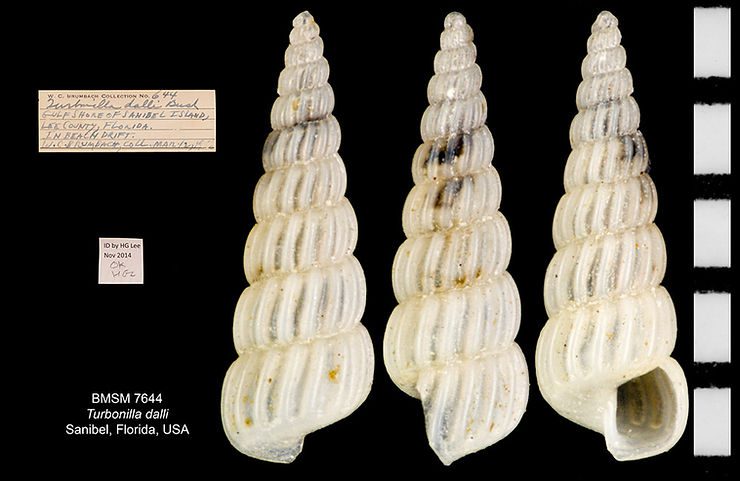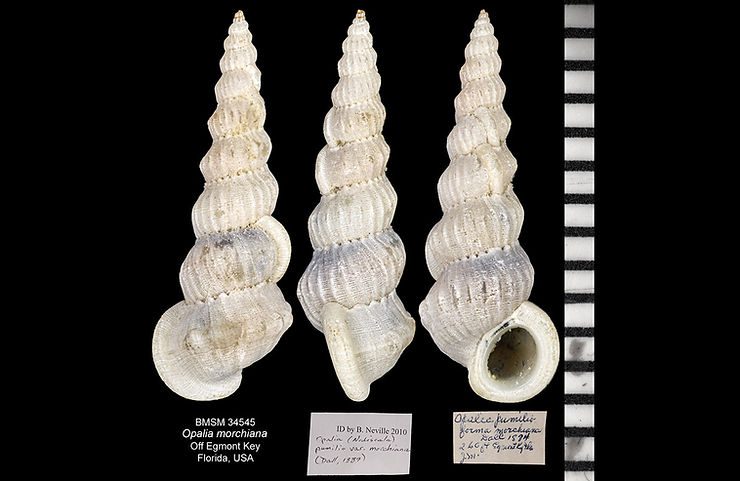
Shell of the Week: The Dimpled Wentletrap
Opalia morchiana (Dall, 1889) reaches about 12 mm in length. The species has a tall shell profile, with a variable number of wider axial ribs on each whorl and a large number of very small spiral cords crossed by finer axial ridges, which impart a pitted or dimpled aspect to the entire shell surface. The aperture is oval, uninterrupted, with a thick apertural lip. Former shell growth stops are indicated by a succession of irregularly spaced varices. Opalia morchiana is found between the depths o
